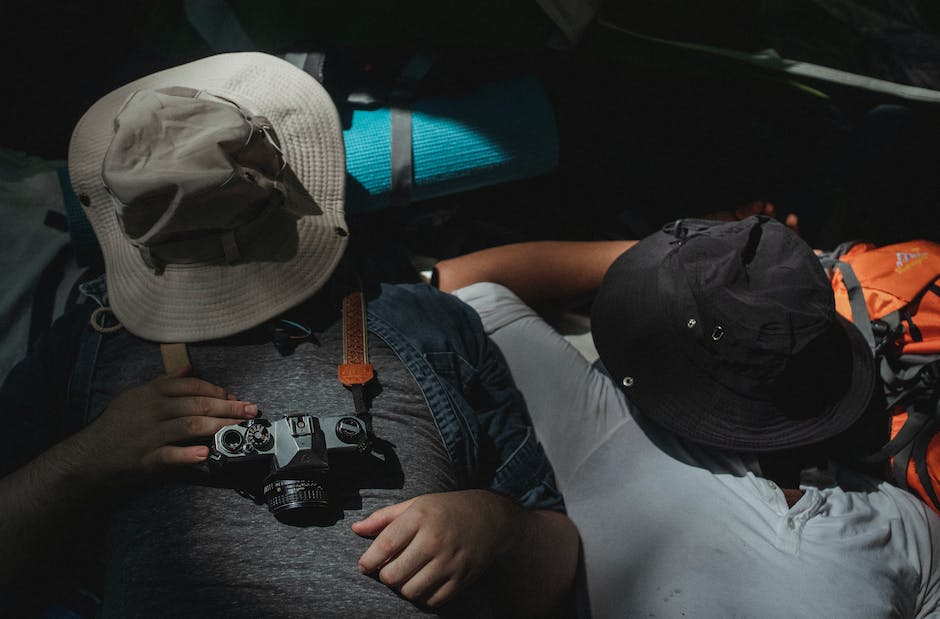Sleep Comfortably When Tent Camping: The Best Advice for What to Sleep On
Tent camping is a great way to reconnect with nature and enjoy the outdoors, but ensuring a good night’s sleep is arguably the most important aspect of a successful trip. The best tent camping sleep setup requires a combination of the right bedding materials, thoughtful preparation and planned campsite. But what should you sleep on to ensure comfortable, restful sleep when tent camping? If you’re asking yourself this question, then you’ve come to the right place! Read on to explore your sleeping options more deeply.
[recommendations keyword=’what-to-sleep-on-when-tent-camping’]
Tent Camping Mattresses: Air vs. Foam
When it comes to choosing the right Sleeping Chest for your tent camping, there are two main types of mattress: air beds and foam beds. But which one is right for you? Have a look at the pros and cons of each type below:
- Air Beds: Air beds are lightweight and easy to transport, making them ideal for thru-hiking and backpacking adventures where weight is a consideration. They provide a luxurious sleep experience, often featuring “built-in” pillows and plush, quilted covers. They can usually be inflated and deflated in minutes. However, they are more vulnerable to regular punctures, so if you are using one, be sure to bring a repair kit and an extra air pump.
- Foam Beds: Foam mattresses are heavier and more cumbersome, but they are durable and provide a lot of cushioning and comfort. They cost less than air mattresses, and while they might take a bit longer to set up, they are often easier to sleep on. These should be the preferred choice for car camping, or when you’re spending a few days in one place.

Camping Bed Liners and Pads
When tent camping, one camping bed liner or pad can make a big difference in the comfort level of your sleep setup. Camping liners can add an extra layer of warmth to an air mattress, while pads raise you off the ground and offer more insulation from the cold ground. They’re lightweight and easily packed away, making them a great addition to your camping gear.
The most popular type of camping bed liner is a sleeping bag liner. Essentially a pouch filled with insulation, sleeping bag liners help keep warmth trapped inside your bag, helping you stay warm on chilly nights. For a bit more padding, there are foam sleeping pads that provide extra cushioning against the ground. Folding foam mattresses are a better option for car-campers who don’t mind putting in a bit more effort to have a comfortable sleep setup.

Camping Cots and Hammocks
When tent camping, you don’t always have to sleep on the ground – camping cots and hammocks are a great alternative and provide a comfortable sleep experience. Cots elevate your sleeping surface off the ground for a better night’s sleep, and they come in various sizes and types. Foldable camping cots are great for those who want to save space in their tent, and are lightweight enough to be taken on backpacking trips.
Hammocks are a classic option for those who like to lounge in comfort. However, be sure to check the weight limit of the hammock you’re using (as some are only designed for lighter weights) and make sure you hang it up correctly. Hammocks are an especially great option for open-air camping, as you don’t need to have a tent set up or worry about solid ground.

Tips for a Successful Tent Camping Sleep Setup
Once you’ve decided what to sleep on, consider the following to ensure a comfortable tent camping experience:
- Inspect the ground for rocks, sticks, and other debris before setting up your tent.
- Bring a sleeping pad or camping bed liner for extra insulation.
- Bring plenty of bedding supplies: sheets, pillows, blankets, etc.
- Choose your campsite carefully; aim for flat, smooth ground, and away from large boulders and tree trunks.
- Camp on higher ground if possible – this will help avoid evening and morning dew.
A successful tent camping sleep setup also requires some thoughtful packing: resist the urge to overpack – the lighter the better – and use packing cubes to help you stay organized.
You also want to make sure you’re set up for success, so make sure your tent is set up correctly. Refer to the instruction manual or watch a helpful instruction video (like this one) to make sure you have everything securely in place!
Now that you have a better understanding of what to sleep on when tent camping, you’re ready to get out there and enjoy some (well-rested) outdoor adventures! Even though tent camping can feel a little daunting, you don’t have to worry—everything you need to sleep comfortably is already in your own backyard.